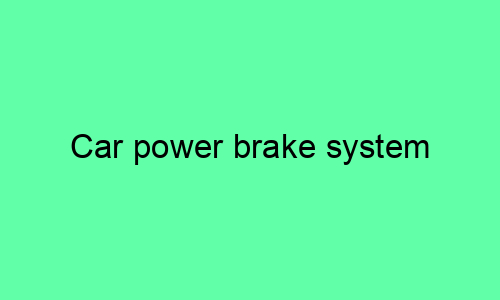Car Power Brake System
Introduction
A car’s power brake system is a system that helps to slow down or stop the car by using a vacuum or hydraulic assist to increase the force applied to the brake pedals. This system makes it easier for the driver to stop the car, especially at high speeds or in emergency situations.
Components of a Power Brake System
The main components of a power brake system are:
- Brake master cylinder
- Brake booster
- Brake lines
- Brake calipers or wheel cylinders
- Brake pads or shoes
How a Power Brake System Works
When the driver presses down on the brake pedal, the brake master cylinder is activated. The brake master cylinder is a piston that is connected to the brake pedal. When the brake pedal is pressed, the piston moves and compresses the brake fluid in the master cylinder. The brake fluid is then sent through the brake lines to the brake calipers or wheel cylinders. The brake calipers or wheel cylinders use the brake fluid to activate the brake pads or shoes, which press against the brake rotors or drums to slow down or stop the car.
Advantages of a Power Brake System
There are several advantages to using a power brake system, including:
- Increased braking power
- Reduced driver effort
- Improved braking response
- Enhanced safety
Disadvantages of a Power Brake System
There are also some disadvantages to using a power brake system, including:
- Increased cost
- Increased complexity
- Potential for failure
Conclusion
A power brake system is a valuable safety feature that can help to improve braking performance and reduce driver effort. However, it is important to be aware of the potential disadvantages of this system before making a decision about whether or not to install it on your car.






